As one of my learning objectives revolves around getting a better understanding of how social media works as it is vital that I understand how effective social media is created.
In regards to Radio 1’s social media output, this spans Facebook, Twitter and Instagram with each of them having a different way of being approached and vastly different content on each platform. For example with Radio 1’s Facebook page, it heavily utilises video content which has varying places it has come from, for example, some clips from a BBC Music tv programme or small extracts from programmes that have been commissioned for BBC Radio 1’s Iplayer channel, or things that have been filmed in Radio 1’s own studios. This shows that Radio 1 in terms of its Facebook output utilises a heavy amount of video content rather than static pictures to keep the viewer engaged. It is also worth noting that the video clips do not normally exceed 1 minute in length so that that viewer stays engaged to the content rather than switching off halfway through due to it becoming boring.
BBC Radio 1 (2017) BBC Radio 1 Facebook [Facebook] 31st October- 5th November. Available from: https://www.facebook.com/bbcradio1/ [acessed 6th November 2017].
The next social media site is Twitter again this is used very differently to that of the others. Twitter does use video to an extent but this is not to the same level that the Facebook page uses however the length is still under a minute and there is often cross-promotion of videos as some videos that appear on Facebook may also be on Twitter. The differences are though that Twitter uses more links to other content such as BBC blogs or full online content such as Live Lounges etc. The other thing that Twitter is used for more heavily is the usage of gifs that have come from relevant content such as music videos or interviews to make people laugh or interact with the content more. Finally, the advantage of the Twitter is that is that it is a lot easier to cross-promote content as Radio 1 can subsequently retweet things such as one of their presenters tweeting about the show or an artists tweet about them being on a show.
BBC Radio 1 (2017) BBC Radio 1 Twitter [Twitter]. Nov 4th- Nov 6th. Available from: https://twitter.com/BBCR1 [acessed 6th Nov 2017].
The next site that is worth mentioning is Instagram. Instagram is utilised mostly for short-form video content that goes in tandem with radio 1’s actual radio output, meaning that these clips directly promote the show rather than say another BBC programme or service. Alongside this are the photos that are put up on Instagram, these are not just photos of everyday things in the studio but more focused around events, e,.g when I looked there were photos from the Radio 1 rocks event alongside photos of presenters with guests etc to encourage people to listen.
BBC Radio 1 (2015) BBC Radio 1 Instagram [images]. Available from: https://www.instagram.com/bbcradio1/?hl=en [acessed 6th November 2017].
Ultimately what I need to grasp is that all the social media platforms have different roles but all of them should be utilised. This means that for our programme we would potentially create a 40-second video of the funniest bits to try and encourage the listener to tune in which would go on all 3 social media sites, to support this we could then take some photos of the recording session to place on Instagram to build a social media presence for our programme and get people to listen to the programme which is ultimately what you want to happen.
Gaining an understanding of how social media is used in Radio 1’s current output also allows me to fulfil my learning objective which is based on social media and learning how it is used in its current context to produce a multi-media presence for radio which is now more important than ever as has been demonstrated above and the frequency of the content that is outputted.
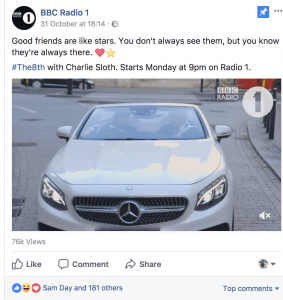
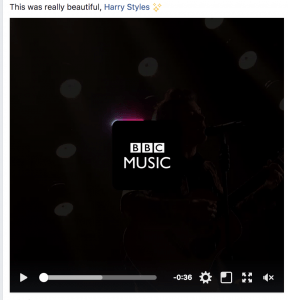
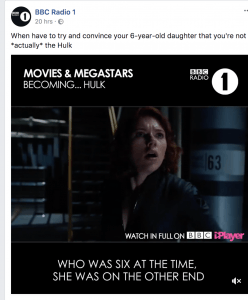
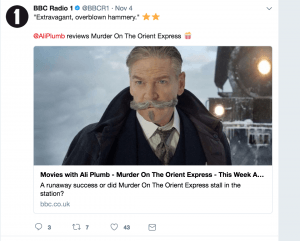
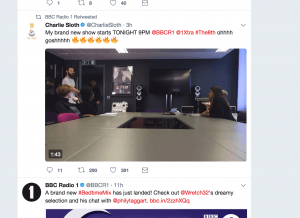
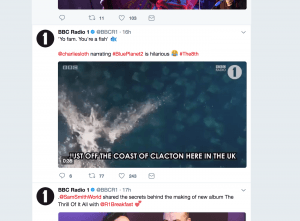
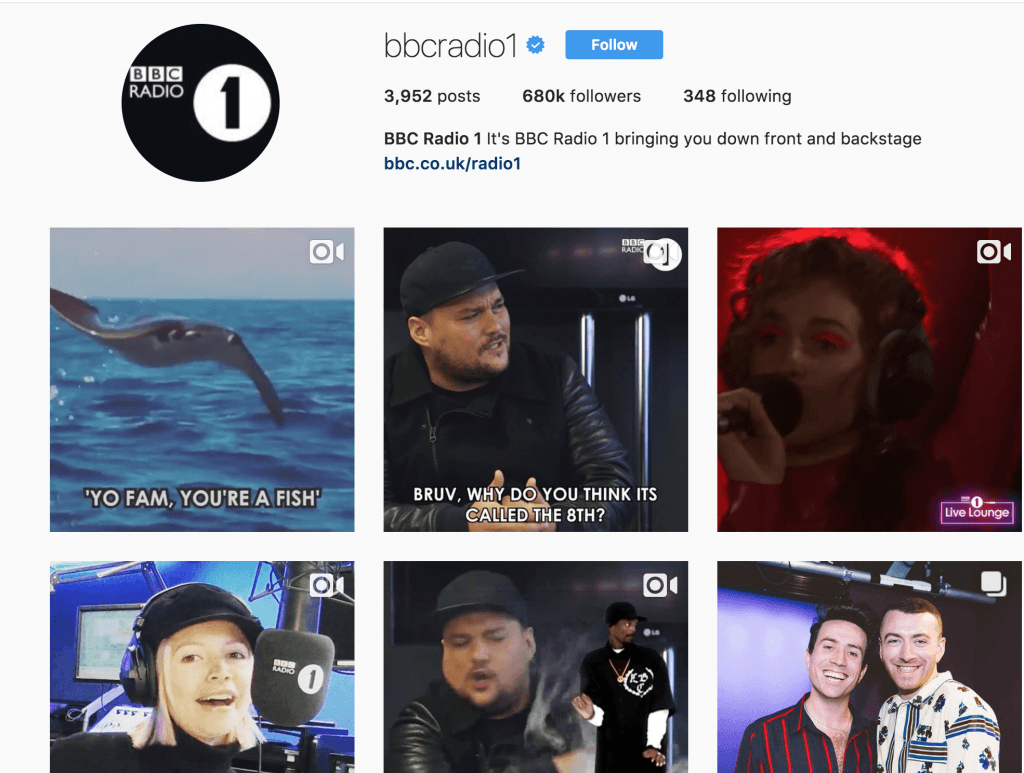
Leave a comment